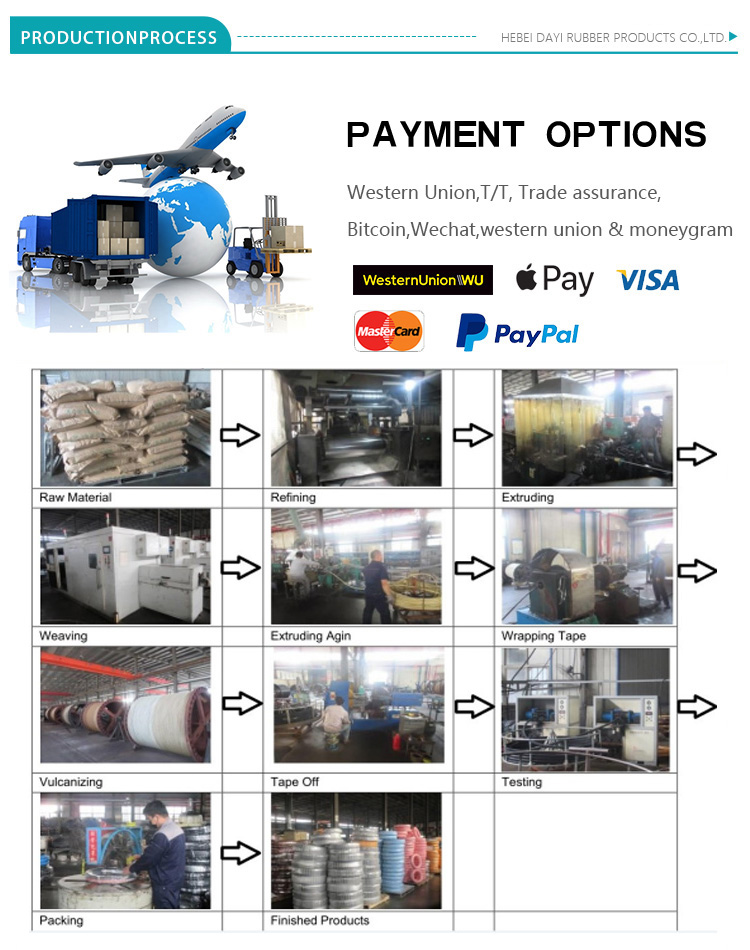335345435
des . 06, 2024 19:06 Back to list
hydraulic hose connector types
Understanding Hydraulic Hose Connector Types
Hydraulic systems are essential in a variety of applications, from industrial machinery to automotive systems. At the heart of these systems is the hydraulic hose, which transfers fluid under pressure. For effective connection and fluid movement, hydraulic hose connectors play a critical role. Understanding the different types of hydraulic hose connectors is vital for ensuring optimal performance, safety, and compatibility in hydraulic systems.
What are Hydraulic Hose Connectors?
Hydraulic hose connectors are fittings designed to interface hydraulic hoses with various components, such as pumps, valves, and actuators. They serve to create leak-proof seals that withstand high-pressure environments, ensuring the smooth operation of the hydraulic system. The choice of connector can affect not just the efficiency of the system but also its safety and longevity.
Common Types of Hydraulic Hose Connectors
1. Threaded Connectors - NPT (National Pipe Thread) This type features tapered threads that provide a seal as they are tightened. NPT connectors are common in many applications due to their robust design and ability to handle high levels of pressure. - BSP (British Standard Pipe) Similar to NPT, BSP connectors come in two forms BSPP (Parallel) and BSPT (Tapered). They are widely used in Europe and are known for their compatibility with various hydraulic applications.
2. Quick Connect Couplings - Quick connect couplings allow for fast and easy connection and disconnection of hydraulic hoses, making them ideal for applications where hoses need to be frequently changed or maintenance is required. - Push-to-Connect Couplings These couplings enable users to connect hoses with a simple push, providing a secure fit without the need for tools. - Flat-Face Couplings Designed to minimize spillage and air inclusion, these connectors are particularly useful in applications where cleanliness and fluid conservation are paramount.
3. Flanged Connectors - Flanged connectors involve a flat surface with bolt holes that secure two components together. They are utilized in high-flow applications and are known for their strength and durability. These connectors can handle larger hose diameters and high-pressure levels, making them a preferred choice for heavy machinery and industrial setups.
hydraulic hose connector types

4. Barbed Connectors - Barbed connectors feature ridges or barbs along the fitting, allowing hoses to grip the connector firmly. They are easy to install and are typically used for low to medium pressure applications. The simplicity of barbed connectors makes them a popular choice among DIY enthusiasts and in less demanding hydraulic systems.
5. Compression Fittings - Compression fittings are typically used with rigid tubing and create a tight seal through the use of a compression ring. They are commonly found in applications where a permanent connection is not required and can be disassembled easily. This type allows for flexibility and can be adjusted as needed to maintain tight seals.
6. Snap-on Connectors - Snap-on connectors provide a simple way to connect hoses with a single motion. They often feature a spring-loaded mechanism that locks the connector in place, ensuring a secure fit. They are widely used in automotive applications and settings where swift hose changes are necessary.
Choosing the Right Connector
When selecting hydraulic hose connectors, several factors must be considered - Pressure Rating Ensure the connector can handle the maximum pressure of your system. - Fluid Compatibility Different materials can withstand various types of hydraulic fluids, so select connectors made from compatible materials. - Installation Space Some connectors require more space than others, so it's essential to evaluate the installation environment.
Conclusion
Hydraulic hose connectors are key components in maintaining the effectiveness of hydraulic systems. Understanding the various types available—from threaded and quick connect couplings to flanged fittings and barbed connectors—enables users to make informed decisions based on their specific application needs. By selecting the appropriate connectors, operators can enhance safety, improve performance, and extend the lifespan of their hydraulic systems. Whether in industrial applications or mobile equipment, the right connector can make all the difference.
-
SAE 100 R17 Black Smooth Cover Hydraulic Hose
NewsMar.07,2025
-
SAE 100 R17 Black Smooth Cover Hydraulic Hose
NewsMar.07,2025
-
SAE 100 R17 Black Smooth Cover Hydraulic Hose
NewsMar.07,2025
-
SAE 100 R17 Black Smooth Cover Hydraulic Hose
NewsMar.07,2025
-
SAE 100 R17 Black Smooth Cover Hydraulic Hose
NewsMar.07,2025
-
steel wire braided hydraulic hose
NewsMar.07,2025



